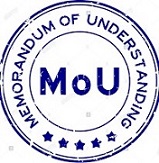Learning English in Third Grade through Powtoon
DOI:
https://doi.org/10.23887/jet.v4i2.24087Keywords:
PowToon, Animation Video, Learn EnglishAbstract
Nowadays, the English teachers in elementary school still use conventional media in teaching English. Based on the phenomena, the researcher developed a media with the aimed to develop Powtoon animation based-video for teaching third-grade students of elementary school. The data of this research were collected through interview, syllabus analysis, students’ questionnaire, and document recording. ADDIE model by Romiszowski was developed as the procedure of this research. The result of this research was PowToon animation based-video can be used to teach English for third-grade students of elementary school. From the students’ questionnaire, it found that the animation video could attract the students’ attention and it also motivated the students during the teaching and learning process. The media was categorized as good media by conducting expert judgment rubric. So, PowToon animation-based video could be used as an alternative media in learning English.
References
Baldauf, J. R., Kaplan, R., Kamwangamalu, N., & Bryant, P. (2012). Current Issues in Language Planning Success of failure of primary second/ foreign language programmes in Asia. what do the data tell us?, 37-41.
Charbel, S., & Ismail, N. (2018). The Effect of Using Powtoon on Learning English as Foreign Language. International Journal of Current Research, Vol.10.
Mahayanti, N. W. (2017). Developing CALF (Contextual, Attractive, Logical, And Fun) Media to Teach Reading for Young Learners. International Journal of Language and Literature, Vol.1, No2, May.2017. ISSN:2549-4287. Universitas Pendidikan Ganesha.
Piaget, J. (1973). To understand is to invent: the future of education (G. Roberts, Trans). New York: A Division of The VIking Press.
Puspitarini, D. Y., Akhyar, M., & Djono. (2018). Developing Powtoon-Based Video Learning Media for Five Grade Students of Elementary School. Advances in Social Science, Education and Humanities Research, Volume. 165.
Sadiman, A. (1986). Media Pendidikan Pengertian Pengembangan dan Pemanfaatannya. Jakarta: Pustekom Dikbud dan PT. Raja GrafindoPersada.
Sarkar, N., Ford, W., & Manzo, C. (2017). Enganging digital natives through social learning. Systematics, cybernetics and informatics, Vol 12.
Sugiyono. (2010). Metode Penelitian Kuantitatif Kualitatif dan R&D. Bandung: Alfabeta.
Sukmadinata. (2010). Metode Penelitian Pendidikan. Bandung: PT. Remaja Rosdakarya.
Downloads
Published
How to Cite
Issue
Section
License
Authors who publish with the Journal of Education Technology agree to the following terms:
- Authors retain copyright and grant the journal the right of first publication with the work simultaneously licensed under a Creative Commons Attribution License (CC BY-SA 4.0) that allows others to share the work with an acknowledgment of the work's authorship and initial publication in this journal.
- Authors are able to enter into separate, additional contractual arrangements for the non-exclusive distribution of the journal's published version of the work (e.g., post it to an institutional repository or publish it in a book), with an acknowledgment of its initial publication in this journal.
- Authors are permitted and encouraged to post their work online (e.g., in institutional repositories or on their website) prior to and during the submission process, as it can lead to productive exchanges, as well as earlier and greater citation of published work. (See The Effect of Open Access)


















